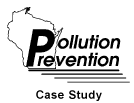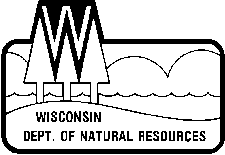
Nicolet Paper Company
Reduction of Xylene, flammable inks, and other wastes through substitution and reuse
- Reduce solid waste through beneficial reuse and recycling.
- Reduce hazardous waste through product elimination and substitution, and development of a chemical procurement process.
- Reduce xylene air emissions through equipment upgrades, written procedures, and chemical substitution.
- Reduce particulate matter releases through installation of an electrostatic precipitator.
To date, solid waste reductions have resulted from concentrated efforts to recycle paper, cores, and metal and the beneficial reuse of a significant portion of Nicolet's paper mill sludge by an in-state paperboard manufacturer. From 1991 through 1994, generation of solid waste dropped by 34 percent, while paper production increased by 25 percent.
Hazardous waste was reduced significantly when a product line utilizing flammable inks was eliminated in 1993. Ongoing efforts include product substitution and a complex chemical application process that provides an organized, systematic approach to chemical purchasing. The process seeks to screen out chemicals which may be detrimental to the environment, health, and safety objectives. Nicolet achieved an important milestone in May of 1994, when it formally changed status to small quantity generator.
WASTE REDUCTION |
|||||
| Category | 1991 |
1992 |
1993 |
1994 |
1995* |
| Solid Waste | 38.9 |
28.6 |
25.1 |
18.9 |
17.3 |
| Haz Waste | 35,569 |
5,119 |
11,528 |
1,416 |
1,441 |
| Xylene | 14,080 |
10,110 |
9,017 |
4,511 |
1,860 |
| Particulates | 984 |
264 |
260 |
122 |
122 |
Note: Solid waste in cubic yards/100 finished
tons, Hazardous Waste and Xylene in pounds.
Particulates in pounds/day.
*1995 data through June.
RECYCLING/REUSE |
|||
| Material | 1993 |
1994 |
1995 |
| Paper | 110,780 |
210,710 |
218,029 |
| Cores | 68,370 |
174,948 |
109,417 |
| Metal | 153,880 |
403,296 |
163,260 |
| Sludge | 0 |
3,610,000 |
3,952,000 |
Please click on graphs for larger view

No capital costs were associated with these reductions.
Operational Costs
None.
Payback Period
Recycling activities have provided a good level of savings in landfill tipping fees and
product value. Costs associated with hazardous waste disposal have decreased significantly
over the last several years.
| Disposal Costs | 1992 |
1993 |
1994 |
| Hazardous Waste Disposal (Approximate Costs) |
$21,524 |
$9,790 |
$900 |
| Recycling Savings (Approximate) | 1992 |
1993 |
1994 |
| Paper, Cores, and Metal | No Data |
$6,151 |
$21,864 |
| Sludge | $0 |
$0 |
$13,865 |
200 Main Avenue
De Pere, Wisconsin 54115
414/337-1270
University of Wisconsin Extension
Solid and Hazardous Waste Education Center
Milwaukee area: 414/475-2845
Remainder of state: 608/262-0385
Industrial Waste Reduction
Information Clearinghouse
Wisconsin Department of Natural Resources
Bureau of Cooperative Environmental Assistance
608/267-9700
 |
PUBL-TS-057 96 |
